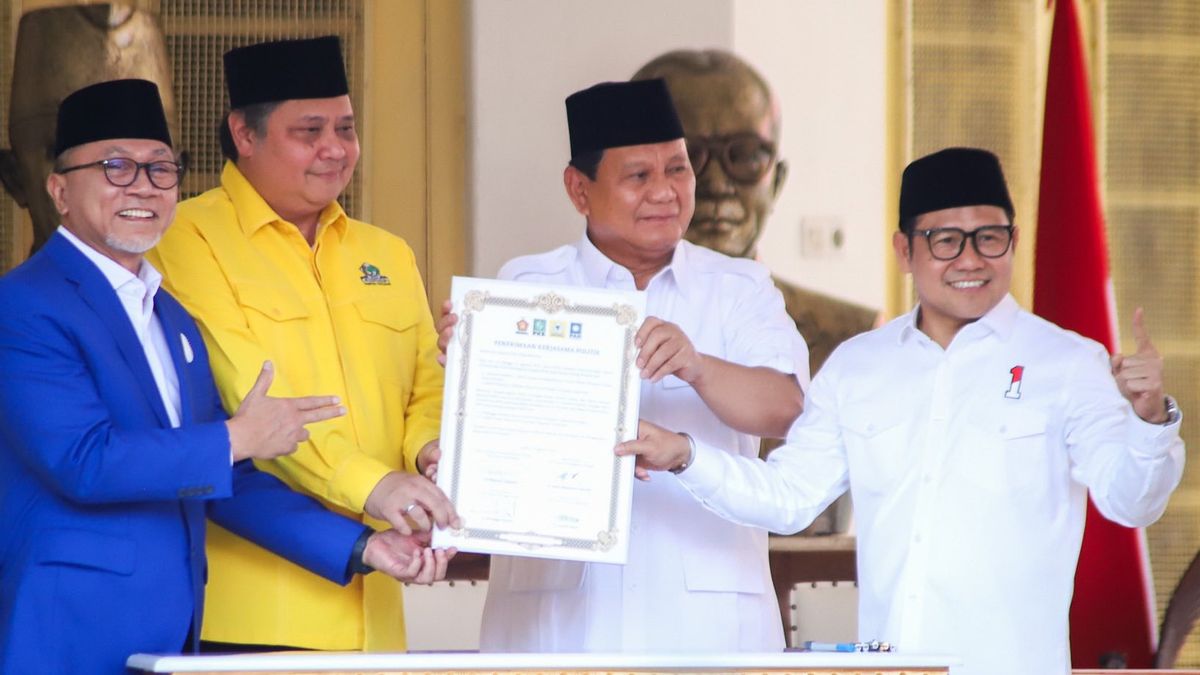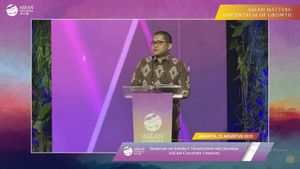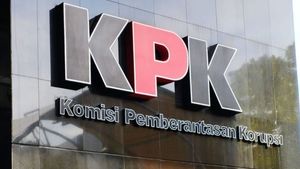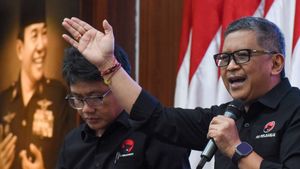JAKARTA - The electability of the presidential candidate Prabowo Subianto is reported to have decreased in various national survey simulations. Including what was held by Saiful Mujani Research and Consulting (SMRC) from 31 July to 11 August 2023.
Even though Prabowo has received the support of many political parties. Starting from Gerindra and PKB as initiators to the most recent when Golkar and PAN.
"Prabowo tends to decline," said SMRC Research Director Deni Irvani in an official release which was broadcast virtually, Wednesday 23 August.
In a top of mind simulation, for example, Prabowo's electability trend fell from 20.9 percent in mid-July 2023 to 20.8 percent in early August 2023.
Then in a closed three-name simulation with Ganjar Pranowo and Anies Baswedan, Prabowo's electability also decreased from 37.8 percent in mid-July 2023 to 33.6 percent in early August 2023.
Furthermore, in a closed simulation with Ganjar, Prabowo's electability also dropped from 46.7 percent in mid-July 2023 to 44.5 percent in early August 2023.
Meanwhile, in a closed two simulation with Anies, Prabowo's electability also fell from 54.9 percent in mid-July 2023 to 52 percent in early August 2023.
اقرأ أيضا:
In a closed simulation of three names with respondents who knew all three, Prabowo's electability also dropped from 35.0 percent in mid-July 2023 to 31.6 percent in early August 2023.
Furthermore, in a simulation of two names who know Prabowo and Anies, Prabowo's electability also dropped from 55.1 percent in mid-July 2023 to 52.1 percent in early August 2023.
Meanwhile, in the simulation of two names who know Prabowo and Ganjar, Prabowo's electability also dropped from 44.5 percent in mid-July 2023 to 42.5 percent in early August 2023.
It is known, the SMRC population is all Indonesian citizens who have the right to vote in general elections, namely those who are aged 17 years or more, or have been married when the survey was conducted.
The basic sample of 3,710 respondents was selected randomly (stratified multistage random sampling) from the population with a proportional number. Oversample is carried out in small provinces so that the total sample for each province is at least 100 respondents.
The final sample total is 5,000 respondents. The response rate (respondents who can be interviewed validly) is 4,260 or 85 percent. A total of 4,260 respondents were analyzed.
The national margin of error for the survey with this number of samples is estimated at +/- 1.65 percent at a 95 percent confidence level, assuming simple random sampling.
Selected respondents were interviewed face-to-face by trained interviewers. Quality control on the results of the interviews was carried out randomly by 20 percent of the total sample by the supervisor by returning to the selected respondents (spot check). In quality control, no significant errors were found.
The English, Chinese, Japanese, Arabic, and French versions are automatically generated by the AI. So there may still be inaccuracies in translating, please always see Indonesian as our main language. (system supported by DigitalSiber.id)

















